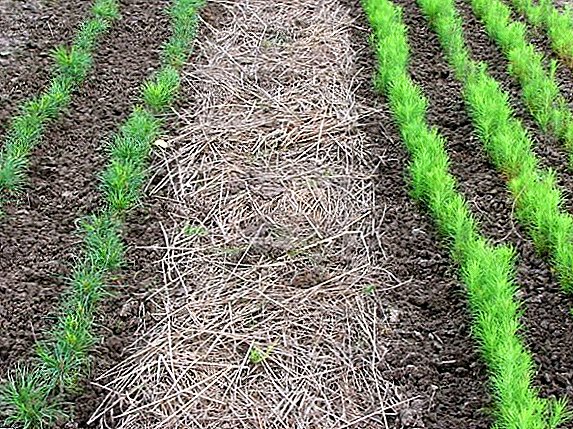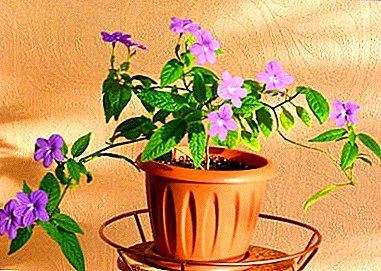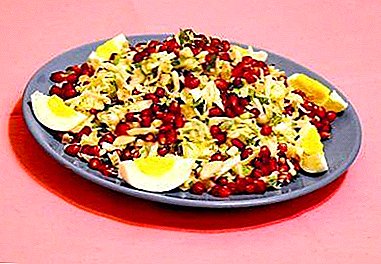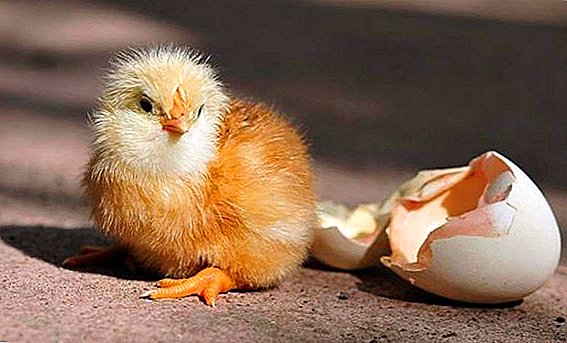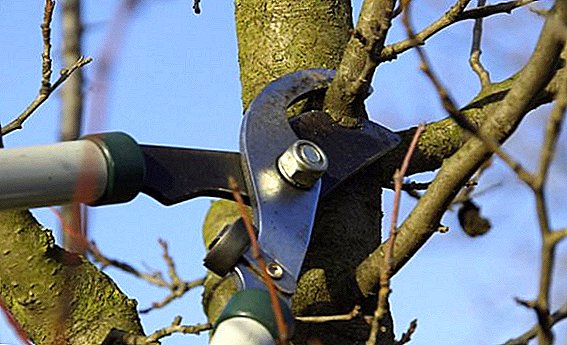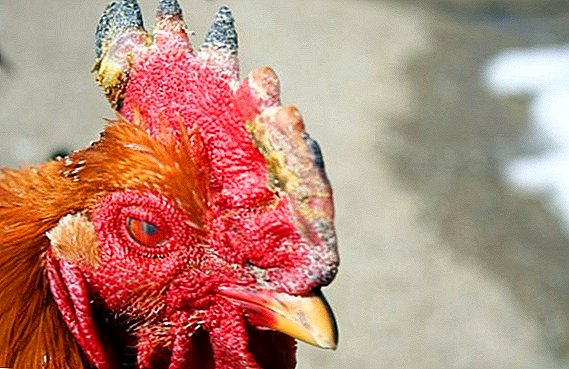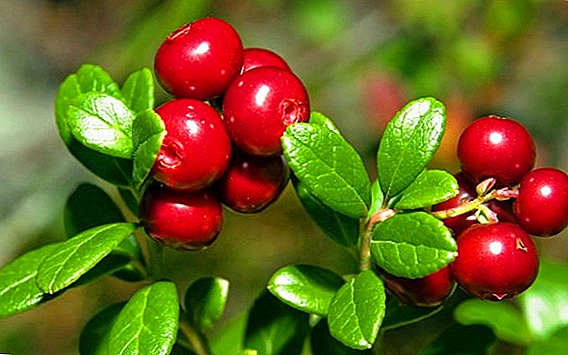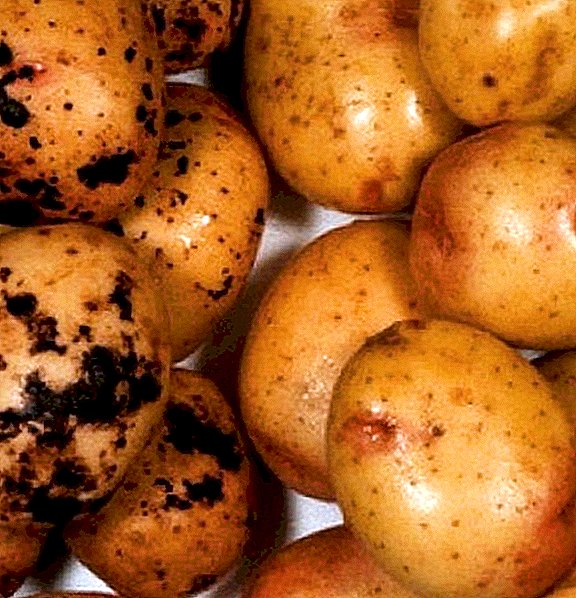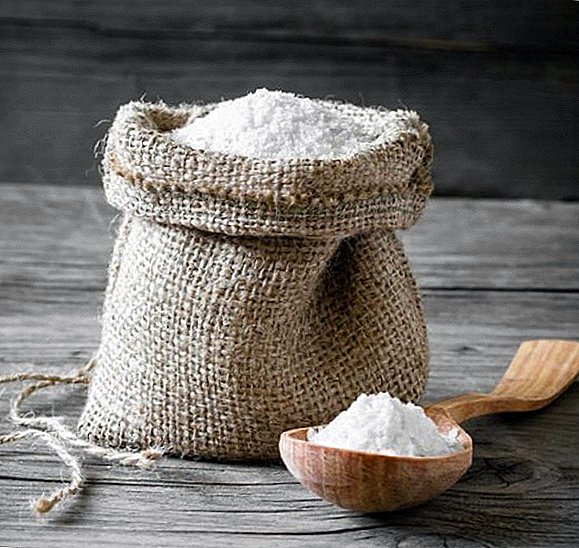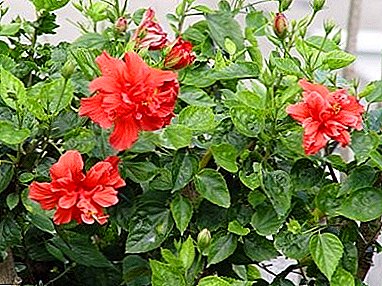
In vivo hibiscus grows in the tropics of Africa, India and China. We have it known as "Chinese rose". The unpretentious flower with beautiful decorative leaves was fallen in love with flower growers. Now it is grown in gardens and apartments. There are varieties of hibiscus, the flowers of which are used for brewing as tea, staining syrups and treating various diseases
Common diseases
Diseases caused by non-compliance with agricultural technology
Hibiscus is quite a hardy plant and can forgive some mistakes in care. But despite this, the agricultural technology in the cultivation of the "Chinese rose" is very important and its non-observance leads to pest infestation and disease development. Chlorosis - This is a disease in which the green parts of a plant change their color to yellow, lemon, or whitish due to a decrease in the amount of hrolofill. This disease is non-infectious and infectious.
Chlorosis - This is a disease in which the green parts of a plant change their color to yellow, lemon, or whitish due to a decrease in the amount of hrolofill. This disease is non-infectious and infectious.
- Non-infectious chlorosis appears when violations in the diet of the plant: a lack or excess of nitrogen, magnesium, potassium, iron. Potassium and magnesium are competing in nature. An overabundance of one leads to a lack of the second. Potassium is needed for flowering plants. With its lack, the plant does not bloom, or the flowers are slightly colored, and the branches are thin. A lack of magnesium leads to chlorosis. The lack of iron also causes yellowing and leaf fall. In order to prevent this, water for watering the plant must be defended and iron chelate added to it.
- Infectious chlorosis caused by viruses, fungal microorganisms and pests. Purification of dust, timely fertilization, transplantation and treatment of pests will help to avoid these diseases.
 Sunburn. Direct sunlight, falling on a plant that has not yet been adapted, partially destroys the chloroform in them, as a result of which, the leaves become covered with white burn spots. This is a temporary phenomenon observed if the flower was moved from a greenhouse or a place with a lack of consecration to the bright sun. Hibiscus quickly gets used to changes in lighting, and new leaves will grow normal. To avoid loss of decoration and not to injure the plant, it is necessary to teach him to bring changes to the sun for an hour a day, gradually increasing the length of stay.
Sunburn. Direct sunlight, falling on a plant that has not yet been adapted, partially destroys the chloroform in them, as a result of which, the leaves become covered with white burn spots. This is a temporary phenomenon observed if the flower was moved from a greenhouse or a place with a lack of consecration to the bright sun. Hibiscus quickly gets used to changes in lighting, and new leaves will grow normal. To avoid loss of decoration and not to injure the plant, it is necessary to teach him to bring changes to the sun for an hour a day, gradually increasing the length of stay.
Pest diseases
 Greenhouse and tobacco whitefly. When a plant is damaged, its leaves turn yellow and become covered with sticky secretions. Pale yellow larvae or adult white-winged insects can be seen on the lower surface of the leaves. To combat and prevent disease, the plant is treated with solutions of potassium soap or drugs Biotlin, Fufanon, Aktara and others.
Greenhouse and tobacco whitefly. When a plant is damaged, its leaves turn yellow and become covered with sticky secretions. Pale yellow larvae or adult white-winged insects can be seen on the lower surface of the leaves. To combat and prevent disease, the plant is treated with solutions of potassium soap or drugs Biotlin, Fufanon, Aktara and others.
Spider mite (spider web on hibiscus). In the affected plant the leaves grow dull and covered with yellowish specks. Subsequently, extensive dried areas appear on them. The underside of the leaves is covered with cobwebs in which the pest lives. To combat and prevent disease, it is necessary to wash the leaves with soap or mineral oil, and also to treat with the preparations Lightning, Fitoverm, Akarin, etc.
 Aphid. Aphids attract young leaves and buds of the plant. With the defeat they are deformed and become sticky. For the prevention and control of the disease, the plant is treated with soapy water, tobacco dust, Biotlin, Akarin, Decis and other drugs.
Aphid. Aphids attract young leaves and buds of the plant. With the defeat they are deformed and become sticky. For the prevention and control of the disease, the plant is treated with soapy water, tobacco dust, Biotlin, Akarin, Decis and other drugs.
Cheesebone. On the petioles and in the axils of the leaves, white waxy secretions appear. To combat the disease, the plant is sprayed with Actofit or treated with mineral oils.
 Shchitovki and false shields. Brownish or pale brown tubercles appear on the stems of the plant. With a small lesion of the plant, the pests are mechanically removed, and the affected areas of the plant are wiped with kerosene or mineral oil. With a strong lesion, the plant is best treated with insecticide.
Shchitovki and false shields. Brownish or pale brown tubercles appear on the stems of the plant. With a small lesion of the plant, the pests are mechanically removed, and the affected areas of the plant are wiped with kerosene or mineral oil. With a strong lesion, the plant is best treated with insecticide.
Bacterial spotting. The edges of the leaves of the affected plant are covered with rotting yellow spots. For the prevention and treatment of disease, the plant is systematically inspected and treated with drugs Fundazol, Cumulus, Euparin, etc.
 Brown rot. Most often affects young plants and seedlings. The affected plants turn brown and the stems grow thinner at the very base. For the prevention of disease, cuttings and seedlings are treated with Rovral. Seedlings should be planted shallowly, carefully sprinkling after planting.
Brown rot. Most often affects young plants and seedlings. The affected plants turn brown and the stems grow thinner at the very base. For the prevention of disease, cuttings and seedlings are treated with Rovral. Seedlings should be planted shallowly, carefully sprinkling after planting.
Vascular wilting. Called fungi. In the affected plant, the branches and trunk rapidly dry out, sometimes not having time to lose foliage. For the treatment of a disease, injured parts of the affected plant are cut out and treated with an antifungal agent.
 Midge gallitsa. In the affected plants, the buds turn yellow and fall, even without blossoming. Midges midges lay eggs in tiny buds of hibiscus, therefore for the prevention of the disease, the yellowed buds are harvested, preventing them from falling, and the soil under the flower is treated with a preparation for ground pests.
Midge gallitsa. In the affected plants, the buds turn yellow and fall, even without blossoming. Midges midges lay eggs in tiny buds of hibiscus, therefore for the prevention of the disease, the yellowed buds are harvested, preventing them from falling, and the soil under the flower is treated with a preparation for ground pests.
Disease symptoms
The hibiscus leaves turn yellow. The most likely causes of the disease are damage by pests (aphids, spider mites), diseases of the root system, insufficient air humidity or chlorosis of the leaves. The causes of chlorosis is the excess of chlorine and calcium in the water for irrigation with a lack of nitrogen and iron. Water for watering plants should be defended and iron chelate added.
Falling leaves of hibiscus. Stress, lack of moisture. It is necessary to create a rest plant and spray.
Hibiscus indoor - turn yellow and fall leaves. Stress, lack of moisture, draft, waterlogging of roots in winter. It is necessary to create a rest for the plant, spray it, making sure that the kidney does not turn into a liquid mash.
 Why does hibiscus curl leaves? . The plant is affected by aphids. Must be treated from pests.
Why does hibiscus curl leaves? . The plant is affected by aphids. Must be treated from pests.
The hibiscus wither the tips of the leaves. Lack of nutrients. It is necessary to feed the plant with nitrogen and phosphorus.
Hibiscus withers. The plant is too hot. It is necessary to reduce the temperature in the room, shade, spray.
Why hibiscus drops buds? The plant is too hot. The soil lacks potash fertilizers. The buds are affected by midge gallitz.
What if he dies?
If your Chinese rose is sick, do not despair, it may be possible to revive. Hibiscus is unpretentious, and it is quite possible to treat at home.
At the moment, developed a lot of drugs to combat pests, they can be purchased in specialized stores or use traditional methods, treating the plant with a solution of soap, tincture of tobacco or pepper.
Folk remedies for pest control hibiscus
Pepper tincture (from aphids, mites) - Dry pepper is poured with water in a ratio of 1: 2 and boiled for an hour, then infused and filtered. For spraying a plant 10g of the drug is diluted in one liter of water with soap. Soap to take about 5g per liter. Tobacco tincture (from aphids, thrips, ticks) - 1 kg of tobacco dust or tobacco is boiled in 10 liters of water for two hours. Insist two days and filter. Before use, the concentrate is diluted in 10 liters of water with 50g of soap.
Tobacco tincture (from aphids, thrips, ticks) - 1 kg of tobacco dust or tobacco is boiled in 10 liters of water for two hours. Insist two days and filter. Before use, the concentrate is diluted in 10 liters of water with 50g of soap.
Soap solution. To prepare the drug, 200 g of potash soap is diluted in 10 liters of water.
Mustard tincture (from mite, aphids) - 50g mustard boiled in a liter of water and insist. Before use, the concentrate is diluted in 20 liters of water.
Agrotechnology is of great importance in the content of hibiscus: soil acidity, heat and light conditions, air humidity and soil. Create a flower comfort: do not move, treat for pests, loosen the soil and water once a week and gradually the hibiscus will grow new leaves.
A photo
More photos on the subject, see below:






